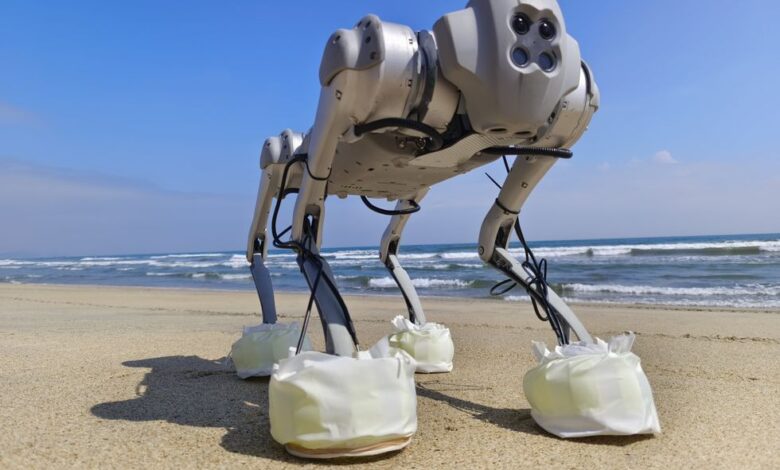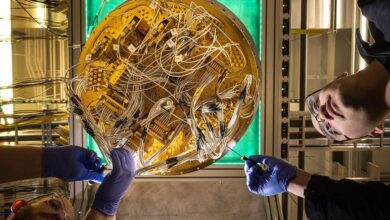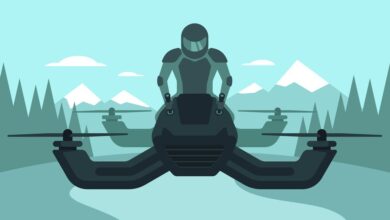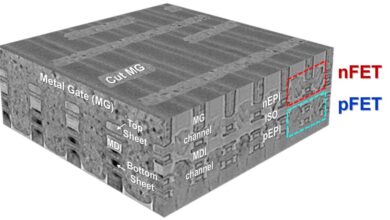Why Not Give Robots Foot-Eyes?

This article is part of our exclusive IEEE Journal Watch series in partnership with IEEE Xplore.
One of the (many) great things about robots is that they don’t have to be constrained by how their biological counterparts do things. If you have a particular problem your robot needs to solve, you can get creative with extra sensors: many quadrupeds have side cameras and butt cameras for obstacle avoidance, and humanoids sometimes have chest cameras and knee cameras to help with navigation along with wrist cameras for manipulation. But how far can you take this? I have no idea, but it seems like we haven’t gotten to the end of things yet because now there’s a quadruped with cameras on the bottom of its feet.
Sensorized feet is not a new idea; it’s pretty common for quadrupedal robots to have some kind of foot-mounted force sensor to detect ground contact. Putting an actual camera down there is fairly novel, though, because it’s not at all obvious how you’d go about doing it. And the way that roboticists from the Southern University of Science and Technology in Shenzhen went about doing it is, indeed, not at all obvious.
Go1’s snazzy feetsies have soles made of transparent acrylic, with slightly flexible plastic structure supporting a 60 millimeter gap up to each camera (640×480 at 120 frames per second) with a quartet of LEDs to provide illumination. While it’s complicated looking, at 120 grams, it doesn’t weigh all that much, and costs only about $50 per foot ($42 of which is the camera). The whole thing is sealed to keep out dirt and water.
So why bother with all of this (presumably somewhat fragile) complexity? As we ask quadruped robots to do more useful things in more challenging environments, having more information about what exactly they’re stepping on and how their feet are interacting with the ground is going to be super helpful. Robots that rely only on proprioceptive sensing (sensing self-movement) are great and all, but when you start trying to move over complex surfaces like sand, it can be really helpful to have vision that explicitly shows how your robot is interacting with the surface that it’s stepping on. Preliminary results showed that Foot Vision enabled the Go1 using it to perceive the flow of sand or soil around its foot as it takes a step, which can be used to estimate slippage, the bane of ground-contacting robots.
The researchers acknowledge that their hardware could use a bit of robustifying, and they also want to try adding some tread patterns around the circumference of the foot, since that plexiglass window is pretty slippery. The overall idea is to make Foot Vision as useful as the much more common gripper-integrated vision systems for robotic manipulation, helping legged robots make better decisions about how to get where they need to go.
Foot Vision: A Vision-Based Multi-Functional Sensorized Foot for Quadruped Robots, by Guowei Shi, Chen Yao, Xin Liu, Yuntian Zhao, Zheng Zhu, and Zhenzhong Jia from Southern University of Science and Technology in Shenzhen, is accepted to the July 2024 issue of IEEE Robotics and Automation Letters
.
IEEE Spectrum




